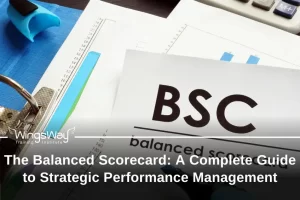
Optimise Your Side Hustle: Lean Six Sigma Principles Every Freelancer Should Know
The freelance economy and the pursuit of side hustles have become significant components of the modern workforce. For many, a side hustle offers an opportunity to increase their income, develop skills, or pursue a passion.
However, juggling a side hustle alongside a primary job, family, and other commitments can be a formidable challenge. The key to thriving in this dynamic environment lies in working smarter, not just harder.
This is where Lean Six Sigma, a powerful methodology traditionally used in manufacturing and corporate settings, can become a freelancer’s secret weapon.
This article will guide you through the core principles of Lean Six Sigma and demonstrate how you can apply them to optimise your freelance work, enhance efficiency, improve service quality, and ultimately, make your side hustle more rewarding and sustainable.
Understanding Lean Six Sigma: The Basics for Busy Freelancers
At its core, Lean Six Sigma is a synergistic approach that combines two powerful methodologies: Lean and Six Sigma.
What is Lean?
Lean thinking primarily focuses on eliminating waste in any process. For a freelancer, “waste” can manifest in various forms – wasted time, redundant efforts, unclear communication, ad-hoc tasks, or even underutilised skills.
The key principles of Lean guide you to deliver exactly what your client values, through the most efficient process possible. These principles include:
- Value: Clearly understanding what your client is paying for and considers important.
- Value Stream: Mapping out all the steps involved in delivering your service, from initial contact to final payment, to identify and eliminate non-value-adding activities.
- Flow: Ensuring a smooth, uninterrupted progression of work from one step to the next.
- Pull: Working based on client demand rather than creating a surplus of work or committing to more than you can handle.
- Perfection: Continuously striving to improve your processes.
Common types of waste particularly relevant to freelancers include:
- Waiting: Time spent waiting for client feedback, information, or approvals.
- Over-production: Doing more work than the client requested or needs.
- Defects: Errors, revisions, or work that doesn’t meet client expectations.
- Non-Utilised Talent: Not leveraging your full skillset or using inefficient tools.
- Inventory (of unfinished work): Having too many projects open simultaneously, leading to divided attention and potential delays.
What is Six Sigma?
Six Sigma is a data-driven methodology focused on reducing defects and variation to improve the quality and consistency of products or services.
For freelancers, this translates to delivering high-quality work reliably, meeting deadlines consistently, and minimising errors that lead to client dissatisfaction or rework.
Key principles include:
- Customer Focus: Deeply understanding and prioritising client needs and expectations.
- Data-Driven Decisions: Using information and metrics, rather than guesswork, to identify problems and measure improvements.
- Process Improvement: Systematically enhancing your work processes.
DMAIC – The Most Common Framework Used in Six Sigma
DMAIC is a structured, data-driven methodology used in Six Sigma to improve existing business processes. It stands for Define, Measure, Analyse, Improve, and Control.
- Define: Clearly define the problem you want to solve or the process you want to improve in your freelance work. It could be time or task management, or client handling.
- Measure: Collect data to understand your current performance and establish a baseline.
- Analyse: Analyse the data to identify the root causes of inefficiencies or quality issues in your work.
- Improve: Develop and implement solutions to address these root causes.
- Control: Establish mechanisms to sustain the improvements and ensure long-term consistency.
This approach is widely used across industries to improve quality, reduce variation in work, and increase efficiency.
Lean Six Sigma: The Power of Two in One
Together, Lean and Six Sigma provide a comprehensive toolkit. Lean helps speed up your processes by eliminating waste, while Six Sigma ensures the quality and consistency of your output. For a freelancer, this means delivering excellent work efficiently, every time.
Applying Lean Principles to Your Freelance Side Hustle
Let’s break down how you can practically apply Lean thinking to your day-to-day freelance operations:
- Define Value from Your Client’s Perspective: Before you start any project, ensure you have a crystal-clear understanding of what your client truly needs and values. Ask probing questions.
What does success look like for them? What are their must-haves versus nice-to-haves? This clarity prevents wasted effort on features or aspects the client doesn’t deem important.
If you’re a freelance graphic designer, you might spend hours perfecting every minor detail of your designs. But most clients care more about receiving multiple concept options than pixel-perfect refinement of a single option.
By redirecting your efforts towards what the clients value, you can increase client satisfaction and reduce your workload.
👉 Pro tip: Ask clients to complete this sentence: “This project will be a complete success if ________.” Their answer reveals what they truly value.
- Visualise Your Freelance Workflow: Take the time to sketch out every step in your typical project lifecycle. This could be from the moment a potential client inquires, through proposal, onboarding, execution, revisions, delivery, and finally, invoicing and payment.
Visualising this “value stream” will help you pinpoint bottlenecks, redundancies, or steps that add little value.
For instance, when a freelance copywriter mapped his client journey, he was shocked to discover his proposal process took an average of 3 days, far longer than necessary. The delay was happening because he was creating custom templates for each proposal.
By developing three standardised proposal templates that he could quickly customise, he reduced his proposal time to just 45 minutes while maintaining quality.
👉 Pro tip: You could map your workflow like this. Again, this could vary as per your projects and roles:
-
-
- Client inquiry (30 mins.)
- Discovery call (60 mins.)
- Proposal creation and delivery (? hours) ← Potential bottleneck!
- Contract and sign off (? days) ← Potential bottleneck!
- Project kickoff meeting (60 mins.)
- Work execution (varies depending on your deadlines)
- Client review and feedback (? days) ← Client bottleneck
- Revisions (varies)
- Final delivery (30 mins.)
- Invoicing (30 mins.)
-
- Create a Process Workflow: Interruptions are a major productivity killer for freelancers. A client messaging you non-stop through the day, phone buzzing with notifications, colleagues calling you for small things, other chores looming through your head—these are all activities that could break your flow and productive time.
Aim to create an environment where work can flow smoothly. This might involve:
-
- Time Blocking: Dedicating specific blocks of time for focused work on client projects, and separate blocks for administrative tasks or communication.
- Minimising Task Switching: Group similar tasks together. For instance, respond to all emails at set times rather than reacting to each one as it arrives.
- Creating Standard Procedures: Develop repeatable processes for recurring tasks
- Setting Up Proper Tools: Ensure you have everything needed before starting work
- Automating Tasks: There’s an app for everything now! Try finding tools that could automate some of your tasks, like scheduling meetings, blocking focus time, invoicing, proposal creation, time tracking, etc.
- Work on Demand: Avoid the temptation to take on too much work simultaneously, as this can lead to rushed jobs, errors, and eventually, burnout. A “pull system” means you only start new work when you have the capacity and when a client has made a clear request.
Tools like Kanban boards (discussed later) are excellent for managing this, allowing you to see your work-in-progress and pull new tasks in as old ones are completed.
Simple Kanban setup:
-
- Backlog (unlimited): All requested work and ideas
- Ready (max. 3): Fully prepared and ready to start
- In Progress (max. 2): Currently working on these
- Review (max. 2): Awaiting feedback
- Complete: Finished and delivered
- Continuous Improvement in Your Freelance Practice: Lean is not a one-time fix; it’s a mindset of continuous improvement (Kaizen). Regularly set aside time (e.g., monthly or quarterly) to review your processes.
What worked well? What didn’t? Actively seek feedback from your clients – their insights are invaluable for identifying areas for improvement. A simple monthly checklist could look like this:
-
- What took longer than expected this month and why?
- Which clients seemed most satisfied/dissatisfied and why?
- What tasks did I procrastinate on, and how can I improve them?
- What one process could I automate or streamline next month?
- What new skill would make my work more valuable?
Benefits of Applying Lean Six Sigma to Your Side Hustle
We know what you might be thinking: integrating Lean Six Sigma principles into your freelance work will add another layer of complexity to it.
It won’t. It’s just a streamlined way of approaching your work, defining a set process for everything to avoid spillovers. This can streamline your workload and improve your productivity.
Here are some other benefits of implementing the lean principles into your daily work:
- Increased Efficiency and Productivity: By eliminating waste and streamlining processes, you can accomplish more in less time, freeing you up for more clients or personal pursuits.
- Improved Quality of Services: A focus on reducing errors and meeting client expectations leads to higher-quality deliverables, boosting your reputation.
- Reduced Stress and Burnout: Well-defined processes, better workload management, and fewer fire drills contribute to a more sustainable and less stressful freelance experience.
- Enhanced Client Satisfaction and Loyalty: Consistently delivering value and high-quality work on time builds trust and encourages repeat business and referrals.
- Increased Profitability: Reduced wasted time means your effective hourly rate increases. High-quality work can also justify premium pricing.
- Scalability: Should you decide to grow your side hustle, having efficient and standardised processes in place provides a solid foundation for expansion.
Tips on Getting Started with Lean Six Sigma as a Freelancer
The idea of implementing Lean Six Sigma might seem daunting, but it doesn’t have to be. Here’s how to begin:
- Start Small: Don’t try to overhaul everything at once. Pick one specific area of your freelance work that feels inefficient or causes frustration. Perhaps it’s your client onboarding process, your invoicing system, or how you manage revisions.
- Focus on Incremental Changes: Lean Six Sigma is about continuous improvement. Small, consistent adjustments over time will yield significant results.
- Utilise Free Resources and Tools: You can find many tools online that have excellent free versions and are more than sufficient for solo freelancers.
- Consider Further Learning: If you find these principles impactful and wish to delve deeper, consider exploring more structured learning opportunities. WingsWay Training Institute offers Lean Six Sigma training that can provide you with more in-depth knowledge and formal certification, further enhancing your process improvement skills and your resume.
Optimise Your Daily Work with Lean Six Sigma Principles
Your side hustle is a business, and like any successful business, it benefits immensely from a focus on efficiency and quality. Lean Six Sigma offers a proven framework and a practical set of tools to help you optimise your freelance operations. By adopting a process-oriented mindset, defining what your clients truly value, eliminating waste, and consistently striving to improve, you can transform your side hustle from a source of stress into a more profitable, enjoyable, and scalable venture.
The journey to optimisation is ongoing. Embrace the principles of Lean Six Sigma, and you’ll be well-equipped to navigate the challenges and seize the opportunities of the freelance world.
Ready to take your process improvement skills to the next level?
Explore the Six Sigma and Lean Six Sigma courses at the KHDA-approved WingsWay Training Institute to master their principles.



